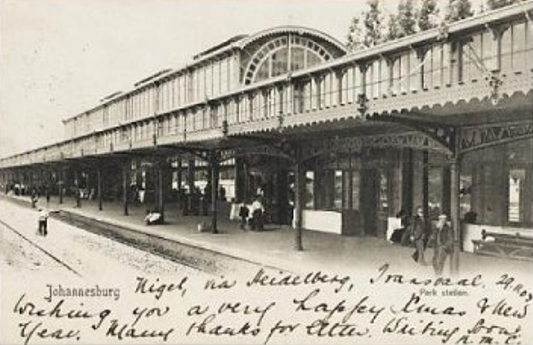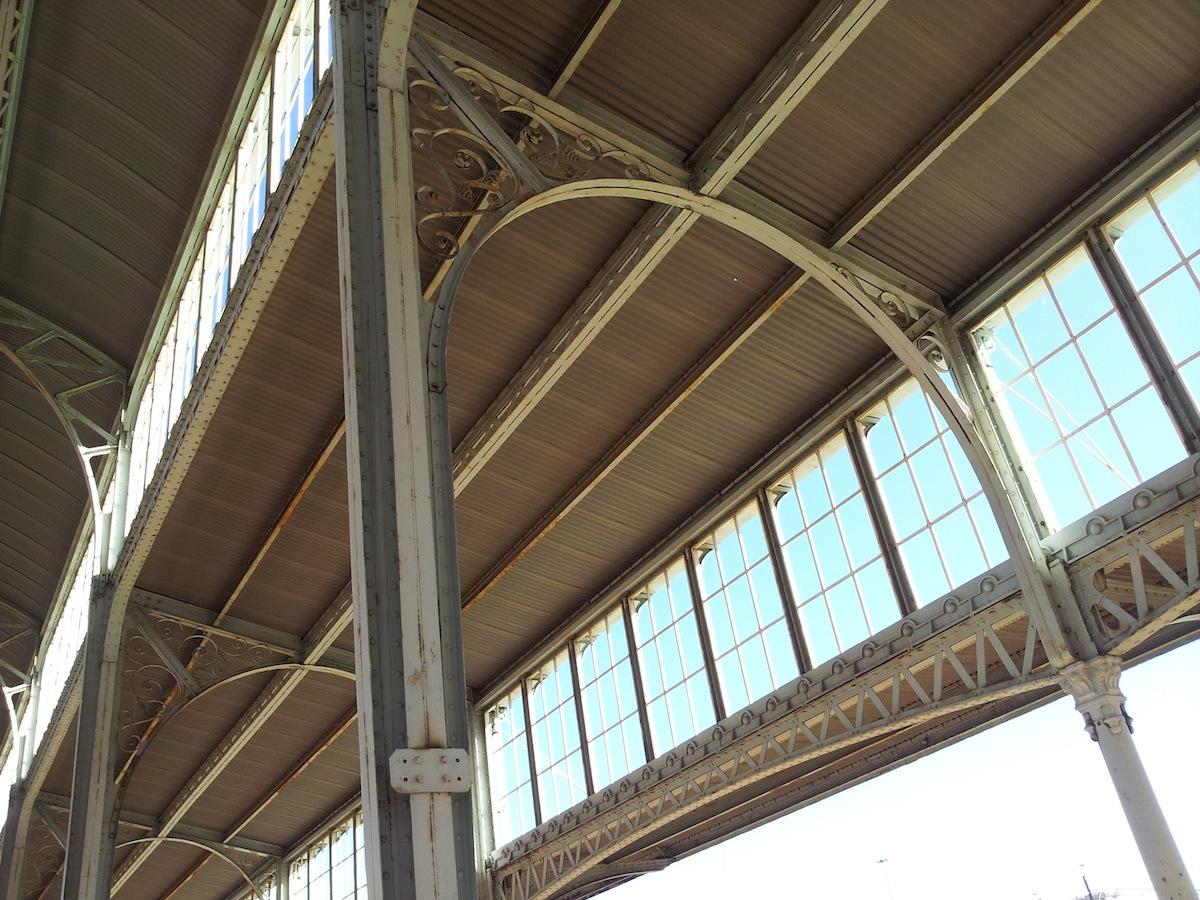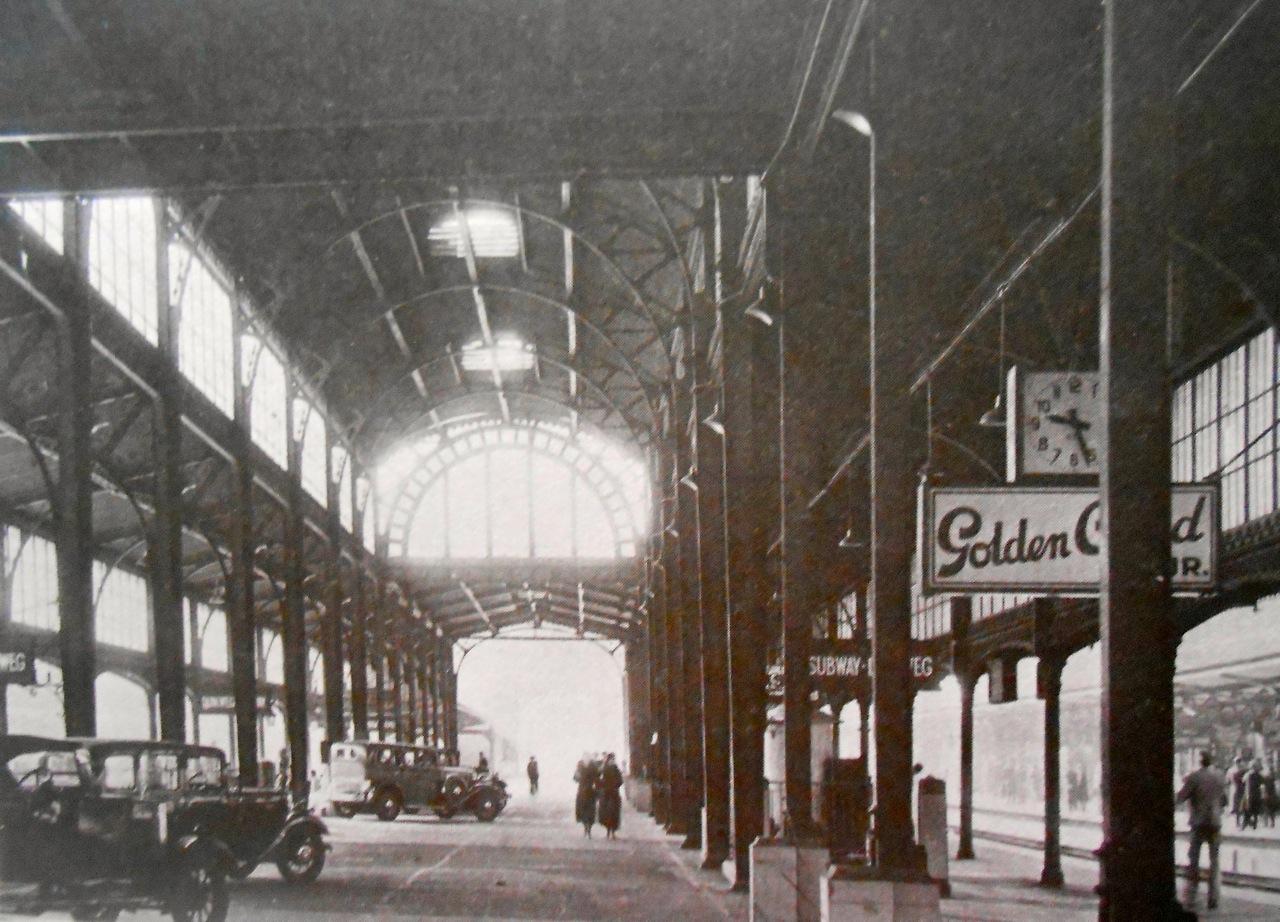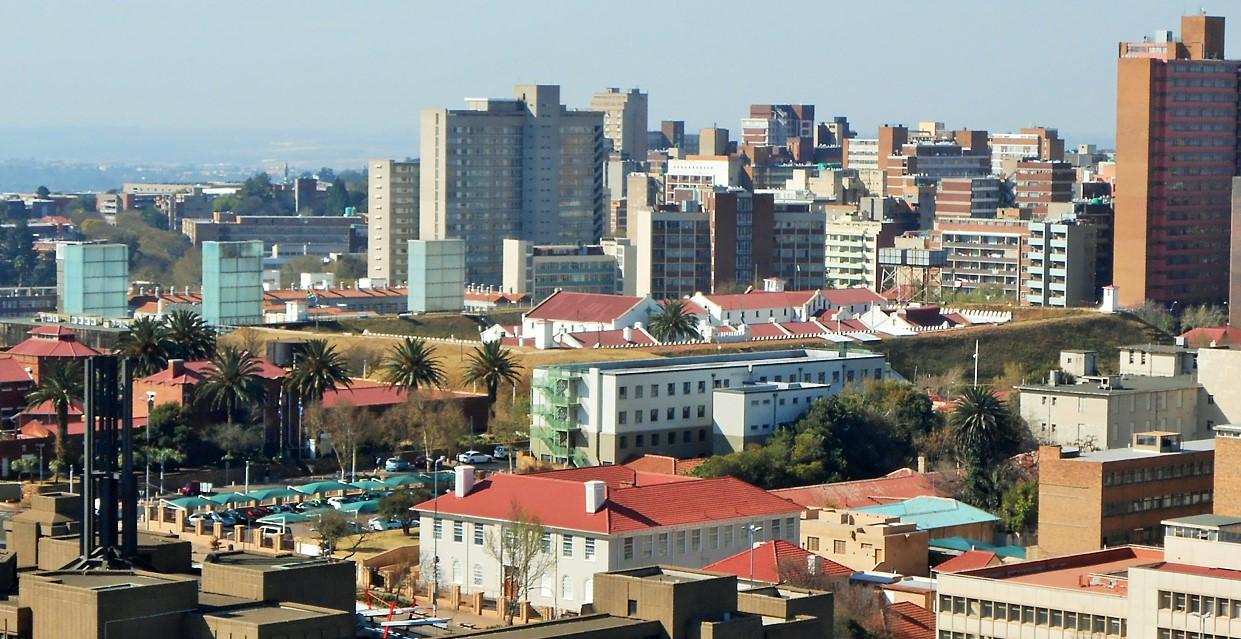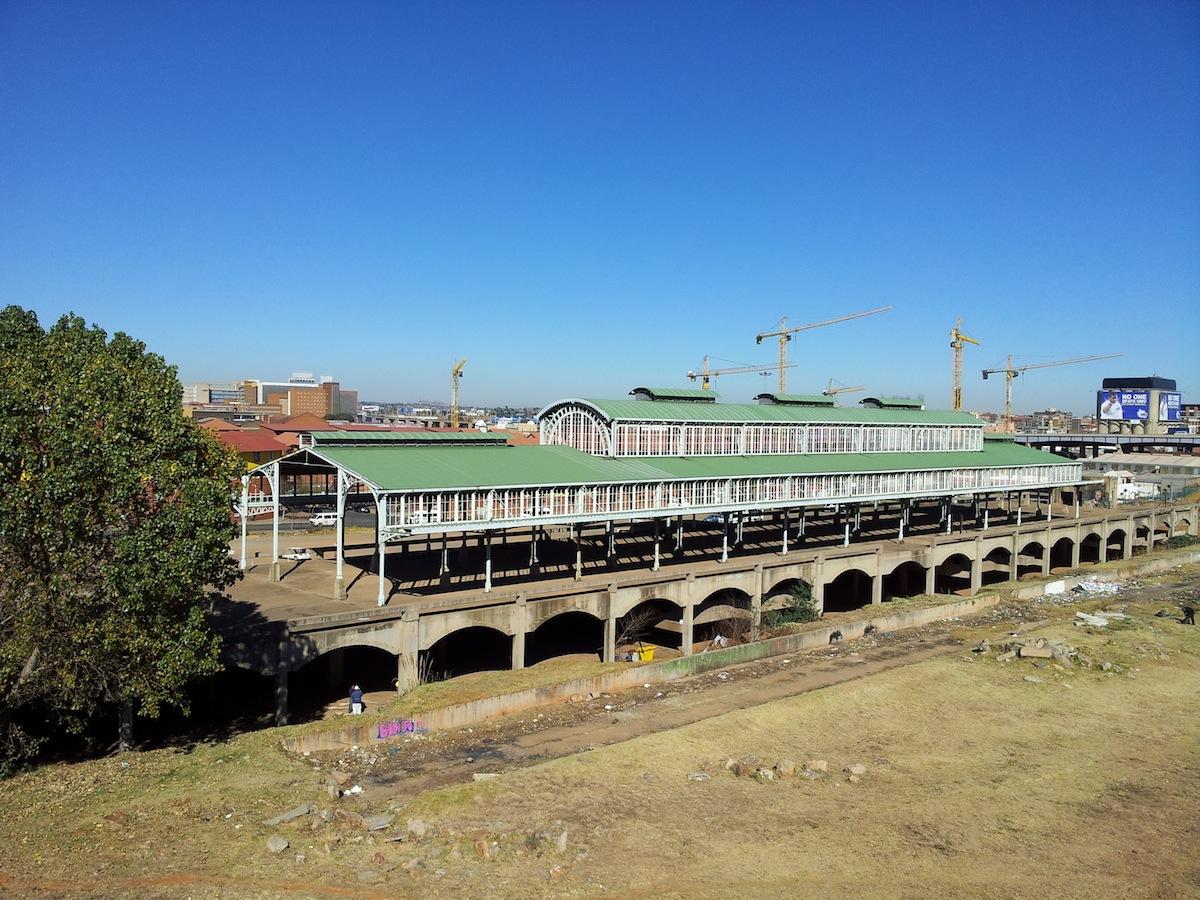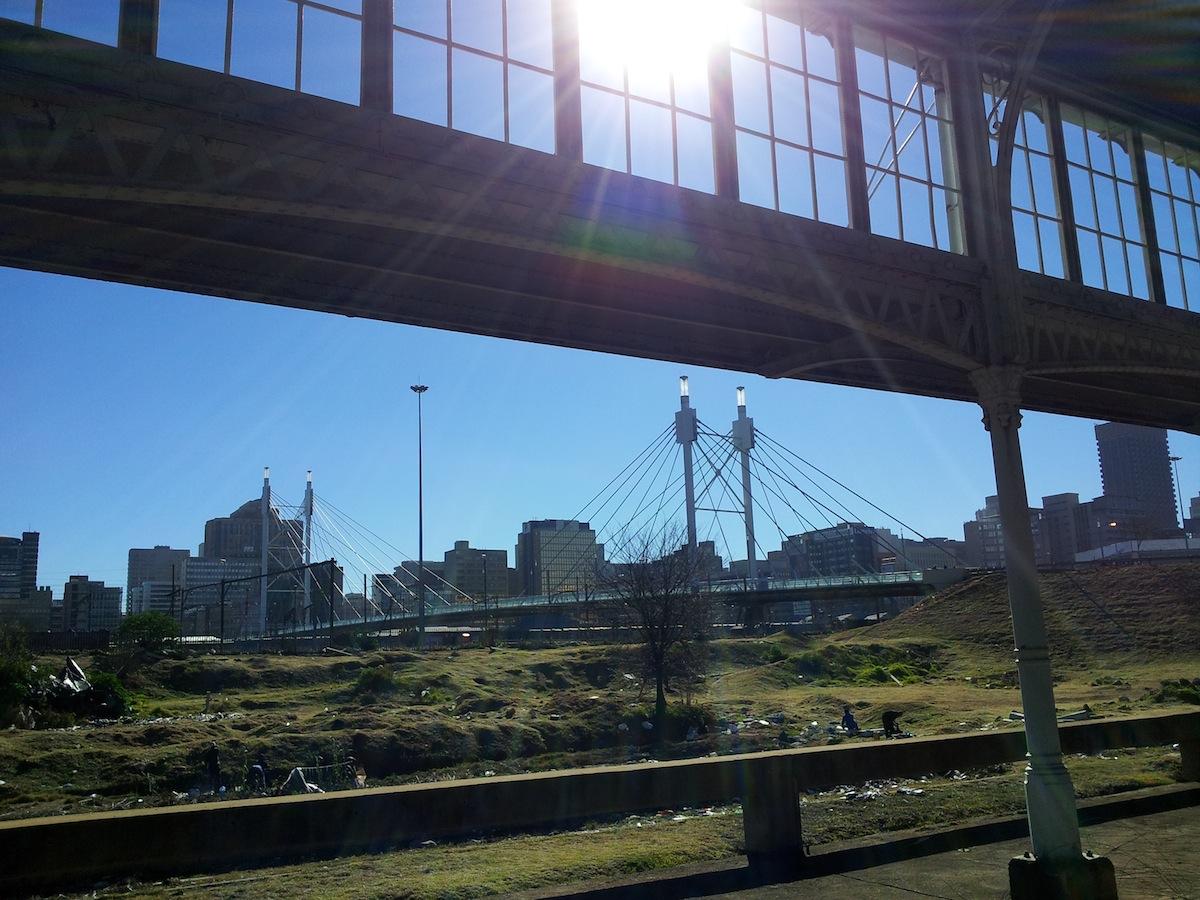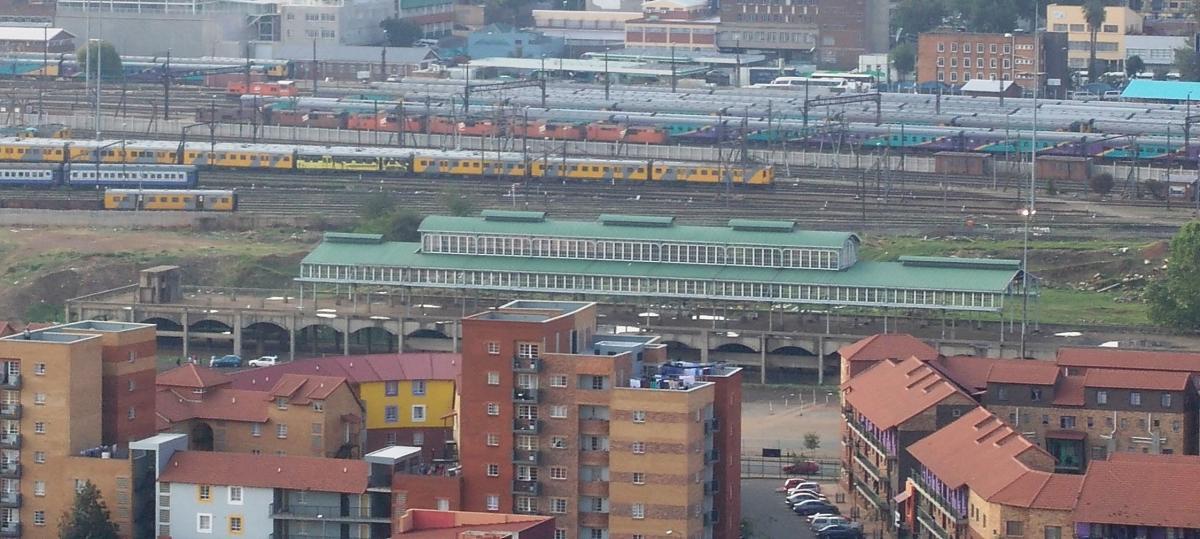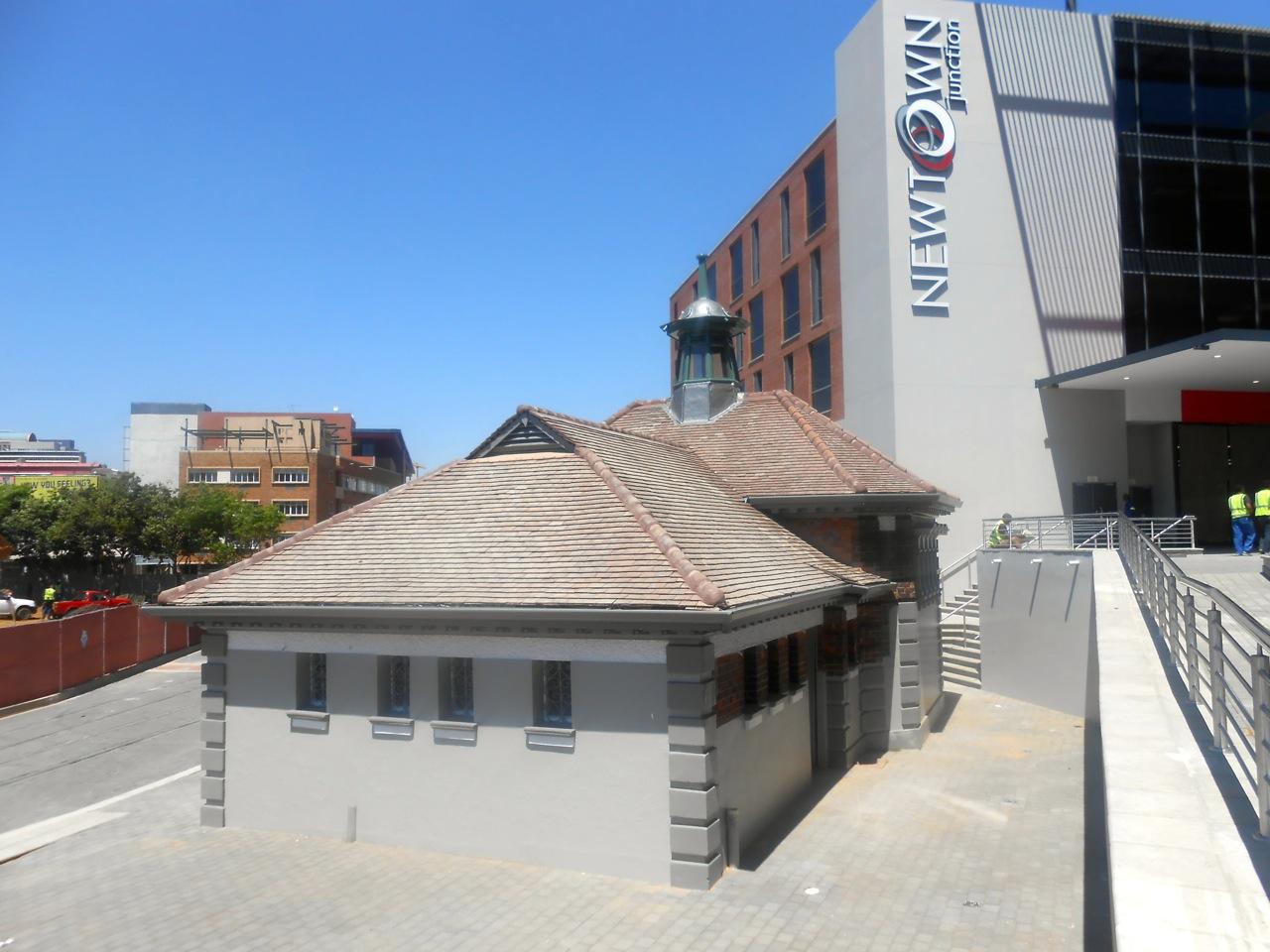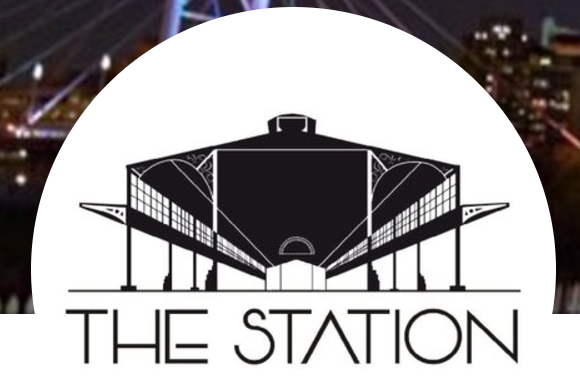Disclaimer: Any views expressed by individuals and organisations are their own and do not in any way represent the views of The Heritage Portal. If you find any mistakes or historical inaccuracies, please contact the editor.
On 21 August 2017, conservation architect Frances Woodgate delivered an outstanding speech at the pilot launch of The Station Market. Those lucky enough to be in the audience were treated to an in-depth look at the history, significance and future of one South Africa's great heritage landmarks. We are honoured to publish a full transcript of the speech below.
Good evening Madam Ambassador, distinguished guests, ladies and gentlemen. It is an honour and a pleasure to be with you all at this important heritage site in the heart of Newtown’s Cultural Precinct.
As a conservation architect, one of the most important and interesting parts of my work is to research and understand heritage sites, in particular their history, significance and what makes them unique. When I arrived in Johannesburg in January 2015, this impressive structure was one of the first heritage landmarks to capture my attention. A few months later, the Johannesburg Heritage Foundation (JHF) invited me to research the structure for a Statement of Significance and I happily accepted (Click here to download).
The Old Park Station dates from 1896 and opened to passengers in 1897. This makes it one of the oldest surviving structures in Johannesburg, giving it exceptional historical value. It is also one of only two station structures in the region surviving from this period, giving it a high degree of rarity. It was commissioned by the Zuid Afrikaansche Republiek and operated by the Netherlands South African Railway Company (NZASM), which later became Transnet. The structure has international significance because it was designed by Dutch architect and civil engineer Jacob Frederik Klinkhamer and was fabricated in the Netherlands.
An old postcard of Park Station
Appropriately for a transport hub, this station is probably the most travelled structure in Johannesburg. As a giant kit of parts, it was shipped from Rotterdam to Cape Town, then the ZAR to its original site at Park Station, about 1km east of here. And its travels didn’t stop there: in 1952, the structure was dismantled and moved 45km to the Transnet railway training college at Esselenpark to make way for redevelopment of the Park Station complex. In 1993, the structure was dismantled again and brought another 45km to this site in Newtown, with the ambition of it becoming a Railway Museum. The total distance travelled is approximately 15,250km – not far off twice the full length of the African continent.
At the time, the erection of the NZASM buildings was the largest single exercise in prefabricated architecture, bar the structures of the goldmines on the Witwatersrand. The architectural technology of Old Park Station mirrors the technology of the railways, with the use of replicated components in iron and rhythmic arrangement of bays. It is a product of the great Industrial Age, when new building technologies were created from pioneering engineering and manufacturing processes.
A product of the great industrial age (The Heritage Portal)
The engineering of the structure is impressive, enabling a lofty structure with comparatively few structural supports. It was cast to a very high quality, the structural elements having survived 120 years of exposure to the weather in three different locations. The wide bay size enabled unobstructed views along the platform, which was important for passenger safety and also enabled flexibility in the planning of the kiosks once housed beneath the central canopy. As a very fine example of a late 19th century pre-fabricated structure, the Old Park Station has exceptional technological significance.
There is a high degree of representational value to the Old Park Station owing to the nature of the design, construction and strong aesthetic which clearly place it as a late 19th century structure. It is unmistakable as a railway structure, and its rapid method of construction reflects the rate of expansion of the railway it served. Its design, elegant proportions and attractive detailing elevate it beyond pure industrial architecture. The barrel vaulted roof is reminiscent of the shape of the steam locomotives that used to pull alongside it, so the language of the architecture illustrates its original function. The ability of historic architecture to convey meaning to the public adds value to its significance, so the structure has high architectural significance as well as high aesthetic and design significance.
The structure has high architectural significance (Victorian Buildings in South Africa)
Associations with important events in history and well known people afford a place social significance. The social significance of the Old Park Station is varied and of exceptional heritage value. For example, it was the point of departure – and return – for soldiers going off to fight in three wars; the Anglo Boer War in the late 19th century, and the World Wars in the first half of the 20th century. Personnel, horses, supplies and munitions were all transported by rail in the war effort. The station was also the point of arrival for the Royal Visit by the British Royal Family in 1947 (click here for details). In stark contrast, the railway was also the primary means of relocating refugees. One example of this was in 1899, during the Second Anglo-Boer War, when the Boer Republic sought to extricate British citizens from Johannesburg. The Old Park Station was also the place where many commuters started and ended their working day. Some even conducted business at the station in the restaurant on the central concourse. It was a convenient place for people to meet and was busy throughout the day. The Old Park Station was thus a stage for everyday comings and goings as well as important events.
One aspect I missed during my research was brought to my attention by Eric Itzkin, Head of Heritage for the City. He told me that Gandhi regularly used the station when he travelled on business between Durban and Johannesburg during his residency between 1903 and 1913. On one occasion, Gandhi was moved by train from Volksrust prison to the prison at the Old Fort here in Johannesburg, and was made to take a demeaning walk in his prison uniform from the Old Park Station to the prison. The association this structure has with Gandhi gives it further national and international social significance.
The Old Fort (The Heritage Portal)
As the main point of arrival in Johannesburg, the Old Park Station was the first impression visitors had of the bustling mining town. The scale and architectural character of Old Park Station were intended to impress and convey the sense that ‘You Have Arrived’ - indeed; it was featured on historic postcards of Johannesburg from the turn of the century. Just 10 years prior, Johannesburg was a temporary mining camp. The building of the vast station structure so early on indicates the transition from mining camp to mining town, but the significant investment and grandeur of the architecture also reflects the ambition of the town to become the region’s financial centre. Within just 42 years from its founding, Johannesburg gained city status and became the financial centre for the whole country. The Old Park Station structure remained in active service until its relocation in 1952, clearly having been designed with enough capacity to cope with increasing numbers of rail passengers.
The Old Park Station survived the redevelopment of the Park Station complex purely because it could be dismantled and moved. It is unusual for heritage structures to be moved from their original location and context; it is even more unusual for them to be moved twice! This purpose designed feature secured the structure’s longevity beyond its original use. Whilst historic significance is often diminished when heritage structures are separated from their original site context and use, the Old Park Station actually gained visual prominence and landmark status when it was moved to this elevated podium in 1993. It is still in close vicinity to the railway lines it originally served and remains recognisable as a station platform structure. It also now has relationship significance owing to its proximity to the Mandela Bridge, which is another landmark structure.
Old Park Station on its elevated podium (The Heritage Portal)
View of Nelson Mandela Bridge from Old Park Station (The Heritage Portal)
Old Park Station is highly visible from Nelson Mandela Bridge, the railway line and the M1 highway, which between them convey tens of thousands of people around the city every day. The long green roofed structure has become synonymous with the urban landscape of Newtown, yet has had to wait more than two decades to get the attention its exceptional heritage significance merits.
Reviewing historic photographs of the structure and visiting the site, I quickly realised the structure is incomplete. The full structure is 21 bays long, yet the section we are gathered under is 9 bays short. The two ends, of 4 bays and 5 bays respectively, are still at Esselenpark. It is a conservation priority that the structure is unified on this site. In order to protect all parts of the structure to enable this to happen in the future, I prepared joint heritage applications on behalf of the JHF to the PHRA-G for both this Newtown structure and the two end structures at Esselenpark. All parts of the structure are now Provincial Heritage Resources.
Old Park Station from above (The Heritage Portal)
Alongside the railway and close to the goods yards, this area once comprised the informal settlements of Brickfields, the ‘Coolie’ or Indian Location and the Kafir Location, where many of the poorer mining workers lived in densely packed makeshift housing. Unfortunately, there was a devastating outbreak of the plague in 1904. In response to the outbreak, Gandhi opened an emergency hospital not far from here in the Indian Location, providing a further historical association with him to the Old Park Station’s current Newtown context. The burning of the area to purge it of the plague gave authorities an opportunity to relocate the racially mixed community to Klipspruit, which later became part of the South Western Townships known as Soweto today. The name ‘New Town’ was given to the cleared area, and the district started over. This means Newtown was an early twentieth century example of urban regeneration but it has a negative association with forced relocation of the local communities.
In the first half of the twentieth century, the industrial and wholesale functions of Newtown attracted many entrepreneurs, though times were hard. Those who succeeded referred to graduating from the ‘University of Newtown’. Today, the area is once again a favoured location with entrepreneurs.
Despite further segregation of the diverse communities of Johannesburg – in particular African, Indian and Cape Malay – through the Slum Areas Act of 1934 and the Group Areas Act of 1950, it is good news that recent research by StatsSA demonstrates Johannesburg is the most racially integrated city in South Africa. Heritage structures and sites can transcend their negative historic associations through inventive reuse that gives them a new relevance to the current time and reflect changes in society. To me, it seems apposite that this structure, located in an area from which communities were forcibly removed, is now going to be used as a place where the five regions of Gauteng will come together and diversity will be celebrated. It will become a space of inclusivity through The Station regional market (click here for details).
A wise person once said ‘conservation is the management of change’. The context and setting of Old Park Station has been changing yet the structure has not been allowed to adapt to those changes. During the 24yrs the structure stood empty, Transnet regrettably did not respond proactively to changes to its environs: the building of Carr Street motorway interchange in 2003 effectively cut off access to the structure on the western side. For some inexplicable reason, Transnet then decided to sell the land immediately south of the structure in 2005, land-locking the structure from Carr Street. The erection of the Mandela Bridge in 2010 cut off access on the eastern side. The railway lines form the northern border, making the Old Park Station site an island. This year, the Brickfields North housing development alongside us was completed and has been suitably named ‘Heritage View’. A further phase of housing is due to be built towards the western end here. The JHF had objected to the proximity of the housing development but conceded that it is a much needed land use in this area and a compromise was sought with the developers to reserve an open square on Carr Street to maintain a view of the structure from the south. A servitude has been granted at the western fringe of the site, alongside the M1 on ramp, which should facilitate future vehicular and pedestrian access. Without functional access, the long term future of the structure is uncertain.
Newtown has been undergoing transformation since the advent of the theatre district in the late 1970s and has had cultural precinct status since the 1990s when Museum Africa and a number of other museums were established walking distance from here. More recently, the appearance of residential accommodation is helping to soften Newtown’s tough urban character and re-establish the vibrancy of a diverse community. Newtown is currently an area of focus for the Inner City Rejuvenation programme. As a result, investors such as Atterbury are now actively involved in improving the district. Newtown is still perceived to have an edgy character, largely due to its industrial and commercial activities and the elevated highway passing over it. The Station regional market will increase employment and promote a positive tourism experience in an area where currently only a limited number of adventurous tourists feel comfortable to visit.
Old and new working together at Atterbury's Newtown Junction (The Heritage Portal)
Conservation is not about simply preserving a structure or building, it is about keeping it alive. Beneficial use and current day relevance make a huge contribution to sustainable heritage and the long term viability of heritage resources. Public activity at heritage sites improves their security and maintenance. As long as the new use respects the heritage and does not harm its significance in any way, the structure is being appropriately and actively conserved. I am therefore delighted that Nkululeko and Louis have identified a beneficial use that can be accommodated beneath the structure without any impact to it, and that is also in keeping with the transport theme of the structure. It is great to think that this structure, as a former gateway to the city, is now going to become a destination in its own right but also the point of departure for tours out into the five regions of Gauteng. These intra-regional tours will reconnect the Old Park Station with the regions it once served on the rail network, and the market will bring the communities from the townships back into Newtown.
It is fitting that the name ‘The Station’ reminds us of the structure’s original use, and, aptly, the formal launch on 15 September falls within heritage month. This week, on behalf of the JHF, I have written to the Chief Executive of Transnet Freight Rail urging him to commit to initiating completion of this important heritage structure during heritage month. Once the structure is complete, consent can be sought for essential maintenance works, including redecoration, which will further enhance the significance and presentation of the site.
The shared cultural heritage initiative CoCreateSA in partnership with The Netherlands is a great programme making strong international links. I hope this internationally and exceptionally significant Old Park Station structure can become the focus of one of these partnership projects and I wish Nkululeko and Louis every success with The Station venture.
Comments will load below. If for any reason none appear click here for some troubleshooting tips. If you would like to post a comment and need instructions click here.

